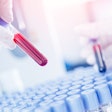
India has a magic number: 1.4 billion. The country has 1.4 billion people, jockeying with China for the most in the world, and its in vitro diagnostic (IVD) market had sales of $1.4 billion in 2022.
Like India’s population, the IVD market is poised to grow in the coming years, according to research published by LabPulse.com's sister publication Kalorama Information in its recent 30-Country IVD Market Atlas report.
According to Kalorama's forecasts, India’s IVD market will increase at a compound annual growth rate (CAGR) of 2.4% from 2022 to 2027, representing a moderate growth rate that will continue to deliver steady results over the next decade.
The following primary factors, among others, contribute to its forecasted growth:
- Increasing aging populations, especially among Indians ages 65 and older.
- Increasing noncommunicable disease incidence, particularly diabetes and cardiovascular disease.
- Steady efforts to diagnose and treat infectious diseases, including HIV, tuberculosis (TB), and COVID-19.
- Increasing disease risk with lifestyle trends, higher obesity rate, and lower activity rates.
- Government initiatives and support for better health solutions and technologies.
The IVD market in India has a complex regulatory process and a fragmented system for device registration and geographical market penetration. Despite these challenges, the IVD market is growing and showing a strong influx of foreign investments. India is highly dependent on medical imports and continues to grow despite the increasing number of domestic medical equipment suppliers.
The country has a high utilization of public healthcare, but there is a growing demand for private services. This is driving market demand in areas such as molecular testing and other advanced testing. The burden of obesity, diabetes, and cardiovascular disease are among the major drivers for the market. There is increased demand for point-of-care (POC) testing, in particular at the consumer level.
India has a very high degree of risk for infectious disease and struggles to diagnose and treat conditions that can overwhelm its health infrastructure. These conditions include the following:
- Foodborne and waterborne diseases, including bacterial diarrhea, hepatitis A and E, and typhoid fever.
- Vector borne diseases, including dengue fever, Crimean-Congo hemorrhagic fever, Japanese encephalitis, malaria, and more recently COVID-19.
- HIV. More than 2.3 million people in India are living with HIV, which is the second highest infection rate in the world. South Africa has the highest population of people with HIV.
- Tuberculosis affects between 2.5 million and 3 million people each year in India, accounting for more than one-fourth of the TB cases in the world. The high rate prompted India’s Prime Minister Shri Narendra Modi to announce an aggressive and ambitious plan to end TB by 2025 with increased notifications of cases and better patient-provider support.
Investment in healthcare has only recently become a priority for the Indian government. The health infrastructure is being developed and undergoing recent changes to medical device regulations and other healthcare regulations. Although advanced equipment and practices are accepted, hospital budgets for new capital equipment have only recently expanded to allow for improvements to dated equipment.
This article is part of a series based on Kalorama Information's 30-Country IVD Market Atlas, which includes the U.S., China, Germany, U.K., Saudi Arabia, India, United Arab Emirates (UAE), France, Vietnam, Turkey, and 20 other countries.



















